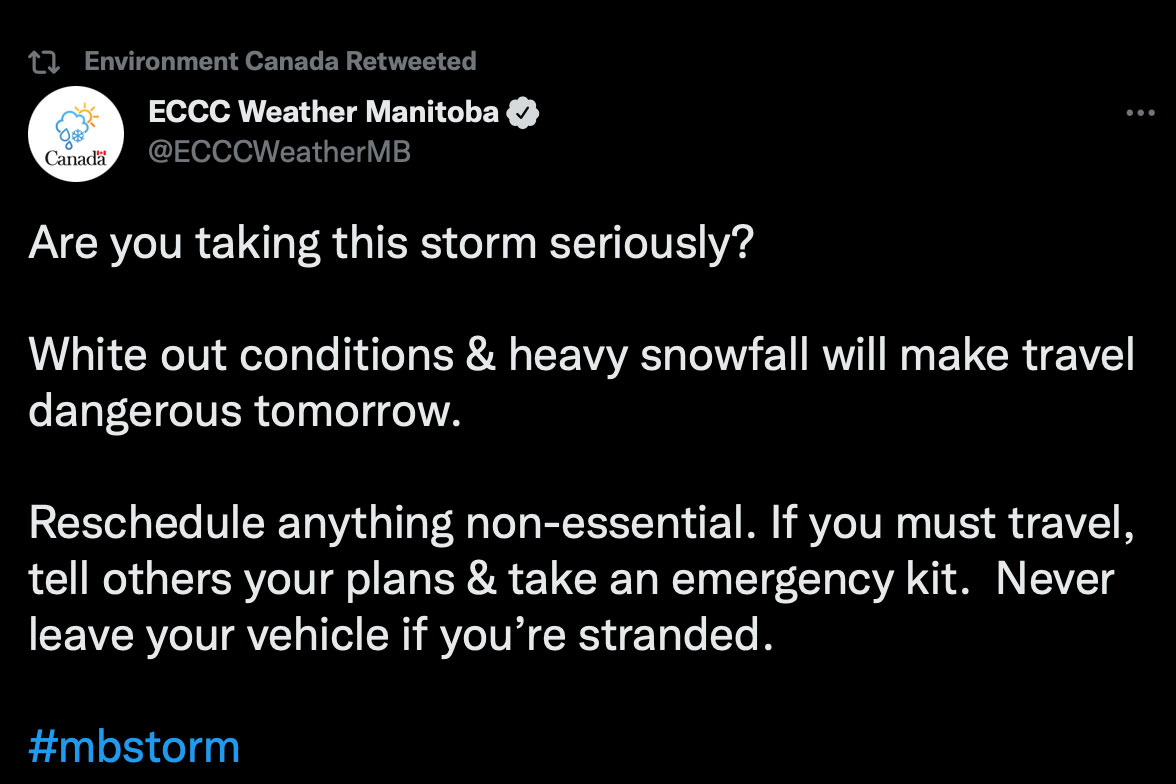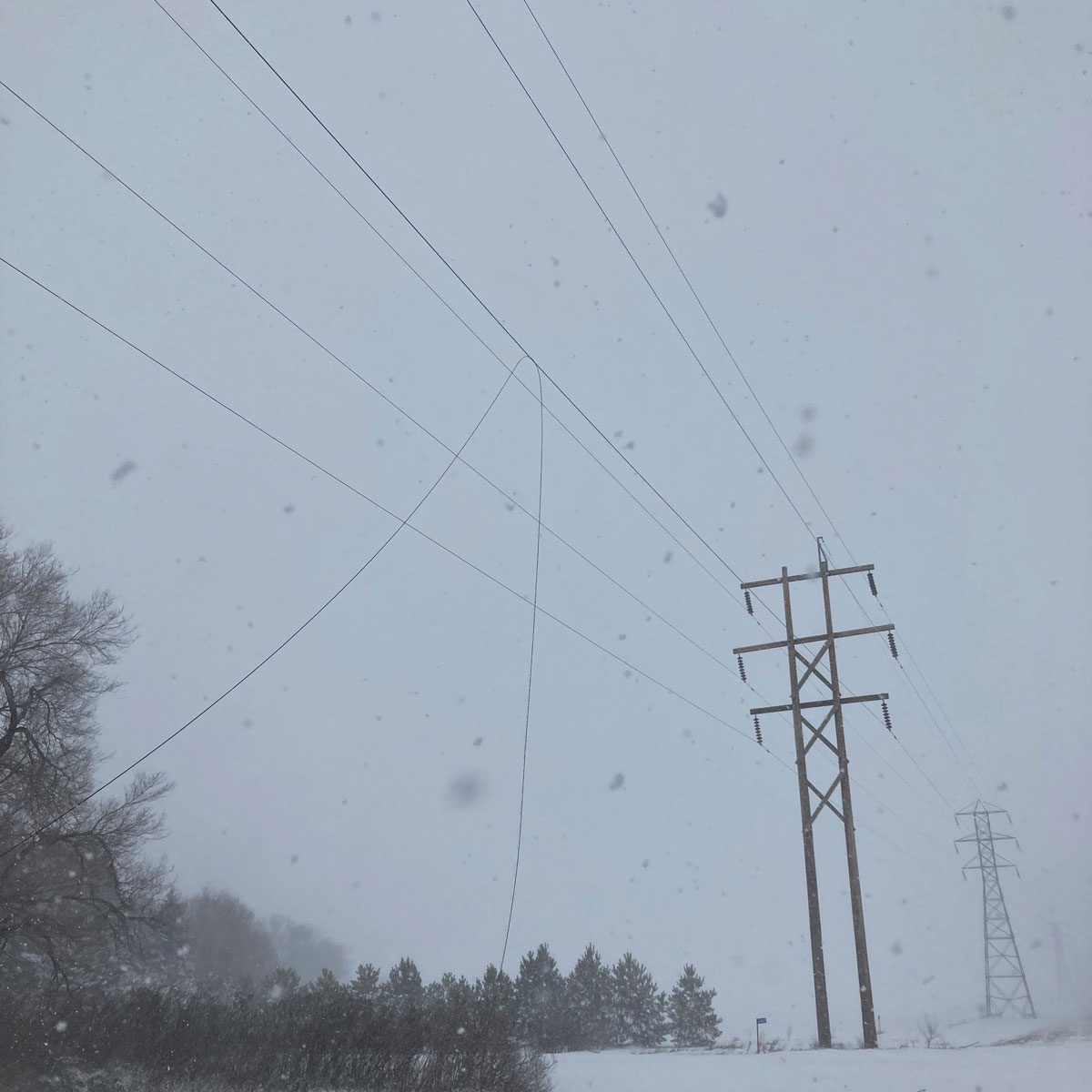The storm that wasn’t: how preparing for anything safeguards our energy
On April 12, 2022, the Canadian national weather monitoring service rang an alarm bell. A blizzard — a potentially record-setting spring storm — was on its way into the province of Manitoba. Residents were told to expect unprecedented precipitation, punishingly high winds, and whiteout conditions throughout much of the province. For the first time in recent memory, a linguistically conservative national weather service’s official advice was, essentially, “batten down the hatches.”
And then, nothing happened.

On April 12, 2022, the Manitoba branch of Environment and Climate Change Canada warned of a significant storm. It turned out to be much less aggressive than anticipated.
Perhaps not “nothing:” Manitoba did experience extremely high winds and got 29 centimetres (11.4 inches) of snow over the course of the storm. And at its peak, nearly 3,300 customers lost power, mostly in rural areas. But compared to a fall storm in October 2019 — which knocked out power to nearly 160,000 customers, both inside and outside of major cities — this storm, which Canada’s weather service predicted could be “the storm of the century,” came up short.
In some ways, we were lucky. But in many ways, we were smart — and prepared.
Manitoba Hydro’s trucks were stocked, crews and support staff were on standby, the Emergency Enterprise Centre was physically readied at our head office, and Hydro’s social media accounts advised customers to prepare an emergency kit in case of an extended power outage.
“It’s so important to be prepared for the worst,” said Brad Hay, Enterprise Emergency Response Coordinator for Manitoba Hydro. “It easily could have been a lot worse if the weather was slightly different.”
Unlike October 2019, the April 2022 storm didn’t feature wet snow and freezing rain (a major problem for any utility), there were no leaves on trees (which dragged branches into countless power lines and electrical infrastructure), and the wind direction was favourable (when wind is perpendicular to electrical equipment and combines with icing conditions, lines can “gallop” and short each other out or break the poles holding them). But planning for the worst and hoping for the best — and ensuring customers do the same — is never a bad idea.
“We’re always prepared. Ensuring reliable electric and natural gas service is our core business,” said Cyril Patterson, Hydro’s Director of Distribution Operations and Maintenance for rural Manitoba. “Whether it’s one customer out of power or 100,000, we’ll be ready.”

